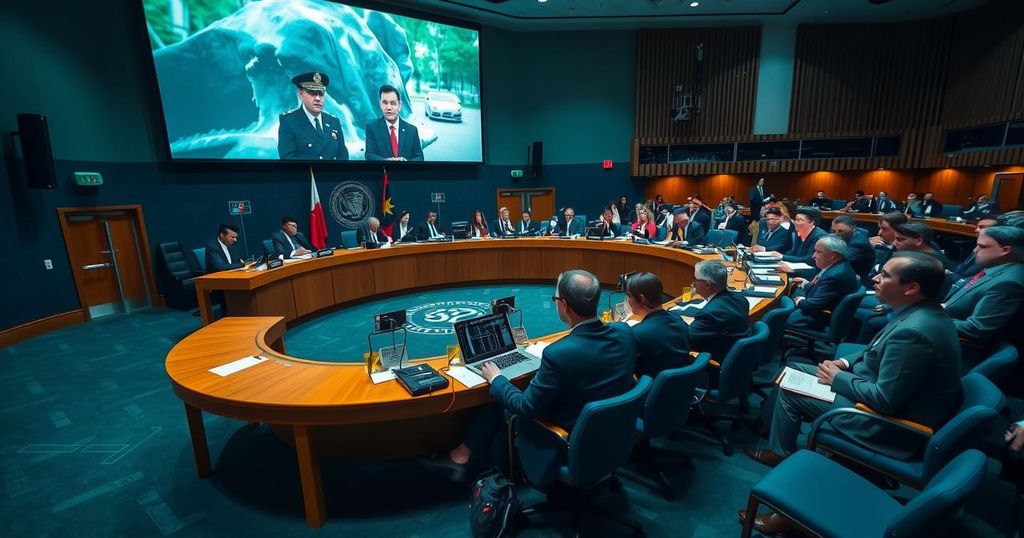The Urgent Call for Action on Climate Change at COP29 in Response to Extreme Weather Events

The year 2024 is on course to be the warmest on record, driven by fossil fuel-induced climate change, leading to unprecedented extreme weather events globally. Notable hurricanes in the United States and extreme flooding across various regions illustrate the severe consequences of climate change. The article elaborates on scientific principles related to increased moisture retention in a warming atmosphere, linking these to intensified droughts and floods. As global leaders prepare for COP29, urgent action is required to address the impacts of climate change, particularly for lower-income countries, through enhanced financial support and ambitious climate strategies.
The impending year of 2024 is poised to become a landmark moment in climate history, largely due to the escalating effects of fossil fuel-driven climate change. With global temperatures expected to reach unprecedented heights, various regions have already begun to experience extreme weather phenomena with alarming frequency and intensity, resulting in extensive damage to human lives, infrastructure, and ecosystems. In the United States, communities remain in the throes of recovery from a series of historic hurricanes, namely Beryl, Helene, and Milton. Beryl marked a historic milestone by becoming the earliest recorded Category 5 storm in the Atlantic, while Helene inflicted record rainfall in multiple states, devastating mountainous regions. Milton, too, has left its mark, being the second fastest intensifying storm documented since 1979. Moreover, the impacts of extreme weather extend far beyond American shores; devastating floods in Central Europe claimed at least 27 lives, while torrential rains in Pakistan and Afghanistan resulted in hundreds of fatalities and mass homelessness. In Brazil, climate change intensified wildfires in the world’s largest grassland, with a study indicating a 40% increase in fire intensity due to climate dynamics, and the African Sahel endured heatwaves that would not have occurred without anthropogenic climate change. This global phenomenon is intrinsically linked to the progressive warming of the Earth, attributed primarily to the combustion of fossil fuels which has significantly increased atmospheric concentrations of carbon dioxide and other greenhouse gases since the industrial revolution. These gases function as an insulative layer, trapping heat and leaving less energy to escape back into space, thus fostering a globally warming trend. Central to the worsening of droughts and floods is the Clausius-Clapeyron relationship, which elucidates the capacity of the atmosphere to retain greater volumes of moisture with each degree of temperature rise—specifically, a 7% increase in moisture per degree Celsius. This augments periods of drought, as a more moisture-retentive atmosphere delays precipitation. Conversely, when rain does occur, it manifests in the form of heavier downpours, contributing to flooding, as evidenced by the simultaneous extremes of droughts in the U.S. and flooding in South Asia. Further complicating this dire scenario, rising ocean temperatures due to heat absorption from climate change are leading to more severe tropical storms and hurricanes. Water temperatures in regions such as the Gulf of Mexico have become conducive to rapid hurricane intensification, which was notably observed with Beryl, Helene, and Milton this year. As nations prepare to convene at COP29 in Baku, Azerbaijan, they will face the pressing challenge of addressing climate adaptation and mitigation for lower-income countries, which are disproportionately affected by these extreme weather events. This includes discussions surrounding the Loss and Damage (L&D) fund, aimed at addressing economic losses resulting from climate impacts. Crucially, enhancing our understanding of climate attribution—whether specific weather events are more likely due to climate change—remains vital for developing effective response strategies in vulnerable regions, particularly in the Global South. This imperative calls for robust global cooperation and significantly bolder commitments from governments in the coming COP discussions. It is imperative that nations prioritize ambitious emission reductions and a solid climate finance mechanism to bolster the resilience of global infrastructure against increasingly frequent extreme weather occurrences.
The article highlights the escalating threat posed by climate change as we approach the year 2024, expected to be the warmest on record due to fossil fuel consumption. It outlines various extreme weather events, including hurricanes, floods, and heatwaves, that have resulted from increased atmospheric temperatures driven by greenhouse gas emissions. The text explains essential scientific concepts regarding moisture retention in the atmosphere and the links between rising ocean temperatures and storm intensity. It emphasizes the urgent need for international action at the upcoming COP29 to address the implications of extreme weather on at-risk communities, particularly in lower-income nations.
The analysis underscores the urgent need for global leaders to act decisively at COP29 in response to the undeniable links between climate change and increasingly severe weather events. With 2024 projected to be a watershed year for extreme climate phenomena, it is critical that governments commit to transformative climate action, robust financial support for affected countries, and proactive measures to enhance infrastructure resilience. Such efforts are essential to mitigate the risks posed by the ongoing climate crisis and to safeguard vulnerable populations worldwide.
Original Source: blog.ucsusa.org






